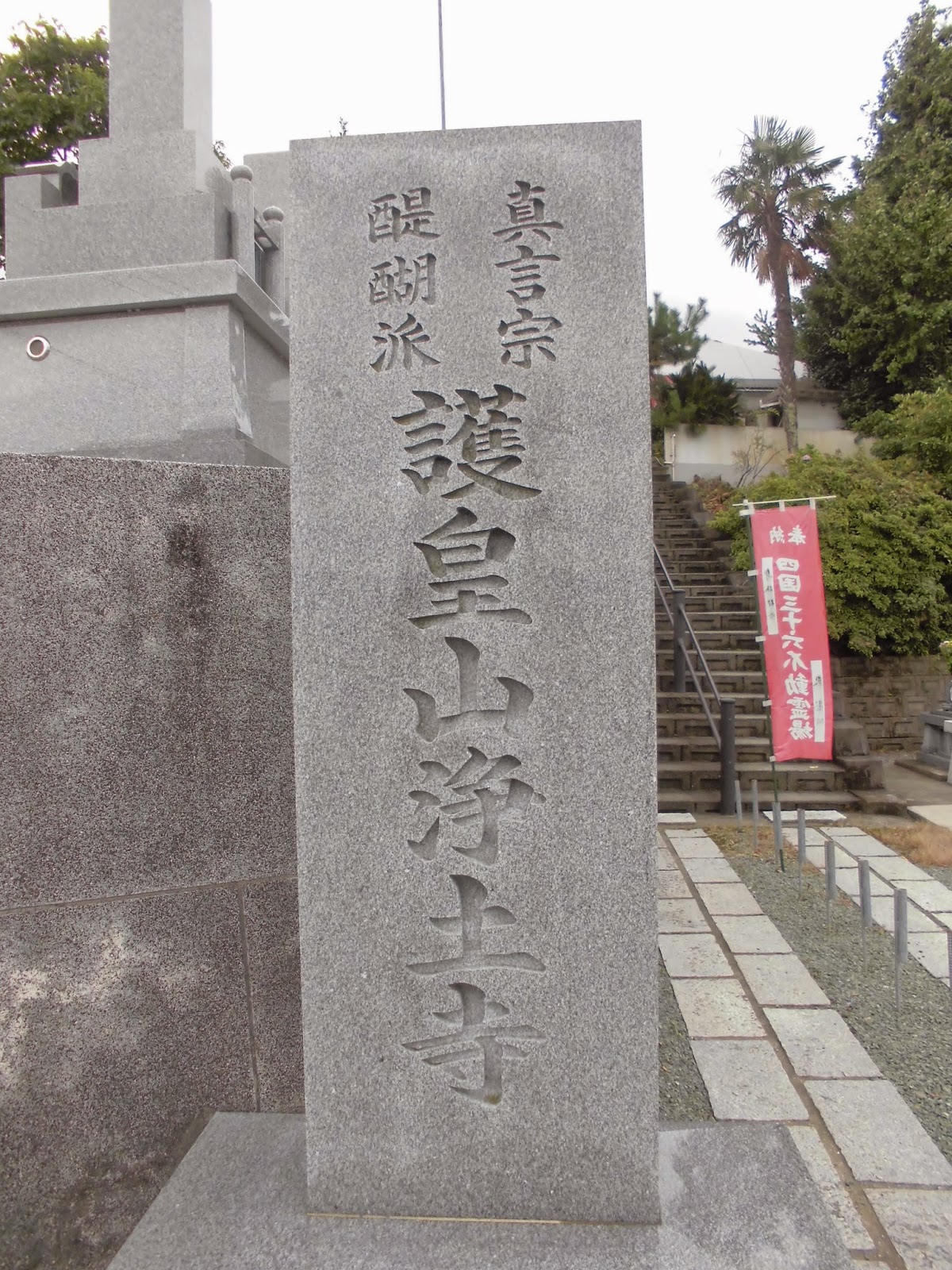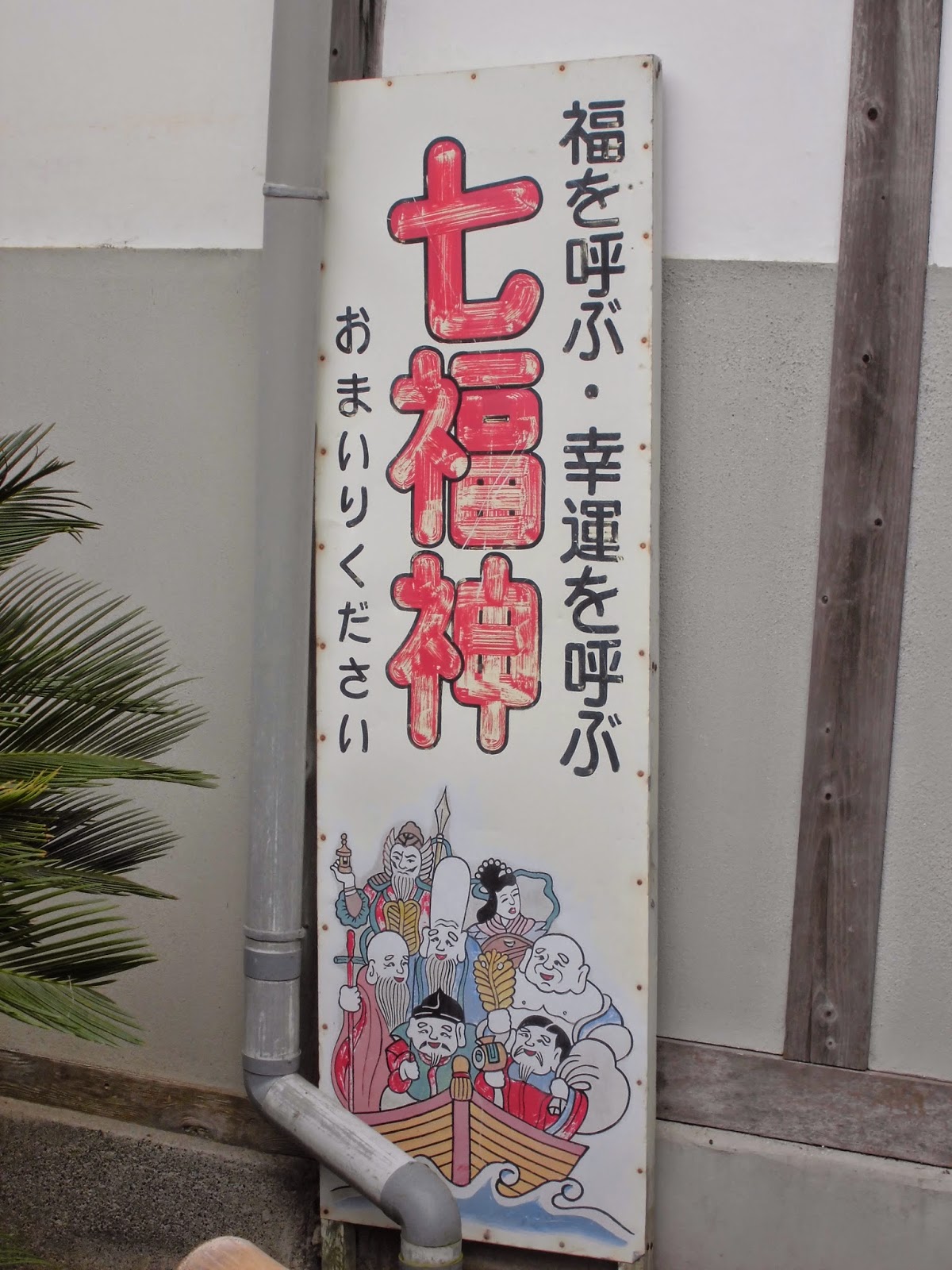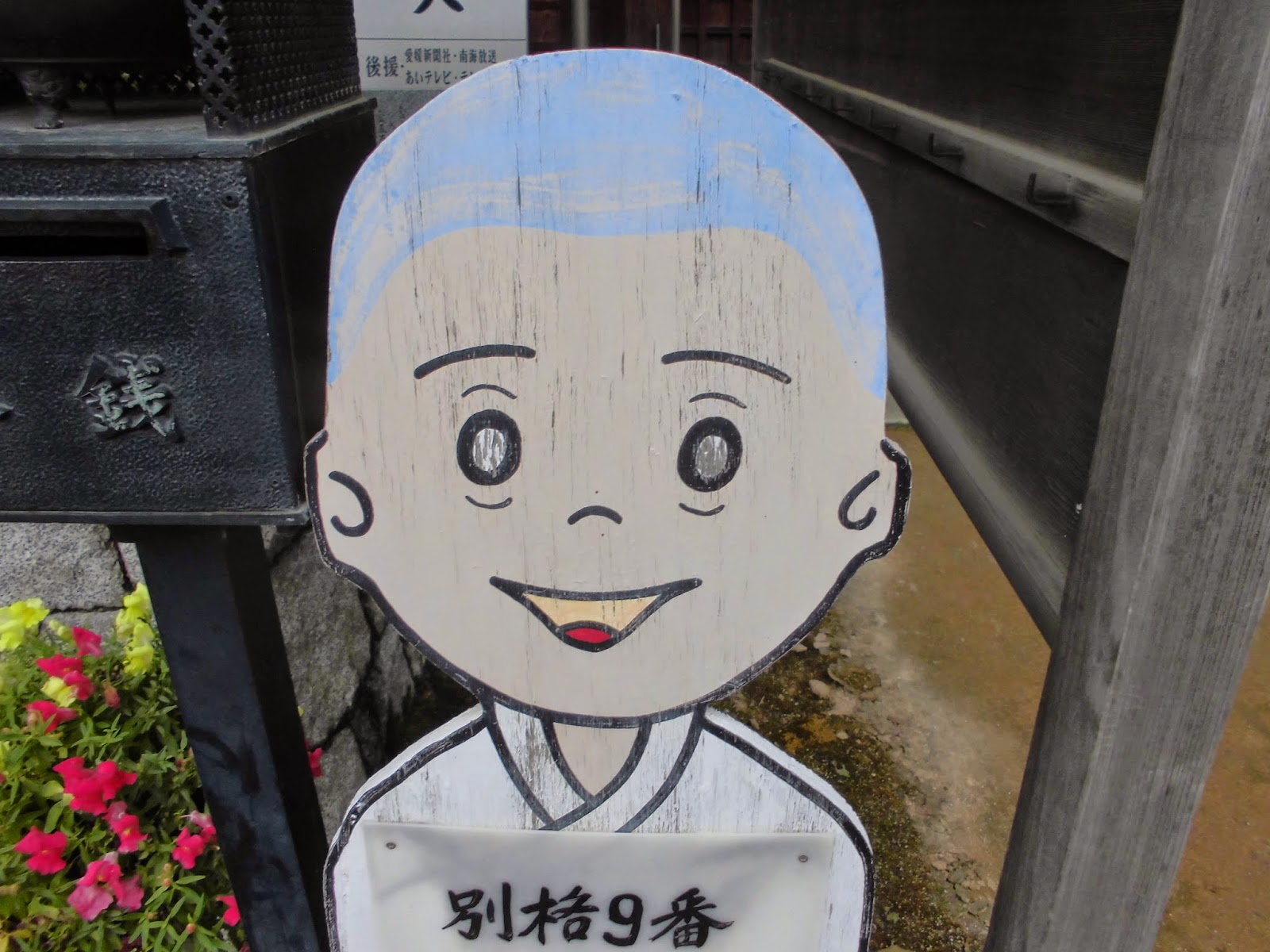Well, I made another trip to Japan recently. I went back to Ehime, where I went last year in September. Once again, I was back right around the Autumnal Equinox.
去年と同じく、今年もちょうど秋分辺りに愛媛に行って来た。
跟去年一樣,我今年也去日本。時期也是跟去年一樣秋分。
BURNING BLOOD
血在燒嗎?
The Cosmos flowers were in bloom. They're very beautiful flowers, aren't they?コスモスの季節だった。
秋英屬的花朵。
Did you notice the title of this post? What's a "Shichifukujin"? What's an "Iyo"? Well, "Iyo" is the old name of the domain?/fiefdom? (I'm not sure what English word to use to describe Japan's pre-modern administrative units) that occupied the area where modern-day Ehime is. The name Iyo is still seen quite frequently in Ehime. For instance, it is the name of the private (as in non-JR) railway line that runs through much of the prefecture.
As for "Shichifukujin", this means "Seven Gods of Luck". Japan has many gods, but for some reason, at some point in history, these seven gods became associated with each other and started being displayed as a group, riding their communal treasure ship. Originally, these seven gods were not necessarily related--their countries of origin are not even the same--but they have become a unit and in areas where their respective temples are located close together, you sometimes will hear them referred to as "[place name] Shichifukujin".
On this trip, we decided to go around to the seven temples of the Iyo Shichifukujin. Not because I'm particularly religious, but just because I like the Shichifukujin and it's fun to do trips like this where you have a goal to accomplish.
The first one we went to was a Jodoin Temple for Fukurokuju. Fukurokuju is one of the two old men in the group. He is a god of long life. He's depicted as having an extremely long forehead. He's originally a Chinese, Taoist god.
このポストのタイトル通り、伊予七福神の七カ所を参拝して来た。私は以前から七福神のファンだから、愛媛に七福神が集まっていると聞いたら、巡拝したくなった。
最初に行って見たのは福禄寿が祀られている浄土寺。下の写真の通り、この日はけっこうどんよりとした感じだった。
我要來說明這個po的標題。伊予是愛媛縣以前的名字。還是常常看得到。比如說,在愛媛有一個鐵道公司叫做「伊予鐵道」。
然後「七福神」是日本的一團神佛。他們有一點像華世的八仙,可是只有七個。(我聽過一個故事。八仙坐船過去日本時,一個丟進海去了,他們到了日本變成七福神。)每一個神佛負自己的責任。
如果一個地方有全部的寺廟,平常說「(地名)七福神」,有人巡迴七座廟拜拜。伊予也是一個這樣的地方。
第一座我們去是叫名「福祿壽」的神佛的廟「淨土院」。福祿壽原本是中國道教的神佛。祂的頭子很長,祂算是長壽的神佛。
It was a cloudy day, and here's the view from in front of the temple.
The higan flowers (Red Magic Lily!) were also in full bloom. I love these flowers. You can see them all over Japan--especially near rice fields--but only around the Autumnal Equinox when they are in bloom.
ちょうど私が大好きな彼岸花の季節だった。
因為剛好是秋分,所以有很多石蒜。在日本,秋分也叫做「彼岸」。(跟佛教有關係但是我不太熟。)所以石蒜叫做「彼岸花」。
The temple was surrounded by rice fields and higan flowers.
A small Jizo statue. Jizo is a god who protects children and travelers. Because his statues are often at roadsides, out in the cold, people make little hats and coats for the statues to keep them warm.
地蔵さんが入り口に座っていた。
叫名「地藏」的神佛。祂保護旅人,所以平常坐在路邊。因為外面會很冷,所以有人送給祂的石像衣服和帽子。
A board telling us that this is one of the Iyo Shichifukujin temples.
Here's Fukurokuju.
福禄寿。長寿の神とされている。なぜか額がすごく長い。福禄寿は元々中国の道教の神だった。
福祿壽
The next temple we went to was Monjuin, which features Bishamonten. Bishamonten is often portrayed as a flashy looking young guy with armor. He's a god of warriors and "righteousness" apparently. His origins are in India, and he was originally a Hindu god.
次に行ったのは文殊院だった。ここには毘沙門天が祀られている。毘沙門天はインドのヒンズーの神で後に仏教の神にもなって、日本に仏教と一緒に渡って来た。武士の神とされているので、槍を持ったり、兜をかぶったりするのが普通だ。
下一座是「文殊院」。這裡的七福神是毘沙門天。祂原來是印度教的神佛。在日本算是士兵的神佛。祂平常拿著矛,穿盔甲。
The Seven Gods on their treasure ship.
坐寶船的七福神。
目がいっている象さん。
A "tengu". Tengus are long-nosed goblin-like creatures who live in the mountains, are part-bird, and very good at swordsmanship. They are sometimes portrayed as tricksters, but sometimes they help people, and sometimes they are even associated with buddhist ascetics.
天狗。日本的天狗不是狗,是樣子像似鳥的妖怪。雖然祂們有時候騙人,但是有時候也幫人的忙。有時也算是跟佛教有關係的妖怪。
This temple is also one of the 88 on the Shikoku pilgrimage. This tired-looking boy informs us that this temple is number 9 on the route.
このお寺は伊予七福神だけでなくて、四国の遍路にも入っている。この目の疲れたお坊さんは「ここ九番目だぞ」と教えてくれる。おい、坊や、まだ79カ所もあるんじゃない?大丈夫か?なんであんなに疲れている?
這一座廟不但是伊予七福神的一座,也是四國八十八的一座。這個看起來很累的和尚告訴我們這裡是第九座。
There were a lot of cats.
猫は多かった。
貓很多
Here we see Ebisu and Daikokuten (and for some reason, Togepi) also members of the Seven Gods of Luck. (Togepi, however, is not one of the Seven Gods of Luck.)
恵比寿と大黒天の石像もあった。なぜかトゲピーもある。
下一片有另外兩個七福神:「大黑天」和「惠比壽」。還有波克比。(為何!?)
*mrowr*
ニャー
More Jizo statues
遍路さんがたくさん通っている地域だから、旅中の人を守ってくれる地蔵さんも多い。
這裡也有地藏石像。
Up until last year or so, the entirety of Shikoku had not one single 7-11. This is incredible given how many there are in the Tokyo area. The chain finally made a push to enter Shikoku recently, and below we have a photo of an Ehime native, weeping with joy and photographing the marvel that was previously denied to her and her fellow Ehimenians.
去年まで四国には7ー11がなかったらしい。しかし今年は愛媛に何軒も見かけた。喜びのあまりに泣き出した愛媛県人はここでこの宝物の写真を撮っている。
雖然在日本7那麼多,可是到去年在四國連一家也沒有。今年才開始在四國做生意。我愛媛的朋友看到7在愛媛開心了至於哭起來了,也拍拍照。
Next time!
次回!
下次!































No comments:
Post a Comment